
|
|
About Continuum Advertising Advisory Committee Archives Contact Us Continuum Home Faculty/Staff Subscribe related websites Alumni Association Marketing & Communications University of Utah Home |

Alumni Association NewsIt�s A PrivilegeBy M. John Ashton 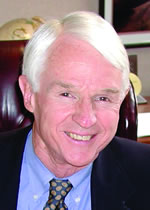 Why is it important for alumni and other members of the University of Utah community to lend their support (financial and otherwise) to the school? What do you get in return? With the launch of the University�s Together We Reach comprehensive campaign in October, we alumni have the privilege of helping the University of Utah become an even more remarkable place than it already is. �A privilege,� you ask, �to contribute to the U in these tough economic times?� Well, yes, actually. Think about it: The outstanding education we received at the U has opened doors that we didn�t even know existed. It helped us get good jobs; introduced us to a diverse student population, many of whom have become lifelong friends; provided us with critical thinking skills; and, overall, broadened our horizons and presented myriad choices and possibilities. We are indeed privileged to have been able to spend time at the U, and we want to ensure that upcoming generations have that same opportunity. It�s about the future. So, yes, it is a privilege to give back to the U. After many years at the Alumni Association, I have seen the power of memberships in building robust alumni programs; of our Scholarship Walkway and the thousands of U of U license plates that now help us provide more than $150,000 annually in student scholarships; and of the spirit of volunteerism that fuels our programs and contributes to the goals of the University in serving the larger community. Please join me and tens of thousands of other U of U alumni in supporting this campaign. The University of Utah has grown and thrived for the past 158 years, and, with your help, will continue to prosper well into the future. Together, we have the privilege of �Reaching� very high indeed. —M. John Ashton BS�66 JD�69 is executive director of the University of Utah Alumni Association. Return to Winter 2008-09 table of contents
| Back to top U Book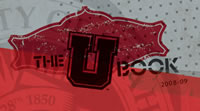 A university education isn�t entirely about research, teaching, and studying. College campuses are also places where people meet, interact, and get exposed to different ideas, cultures, and points of view�and where they develop a sense of appreciation for the institution that is helping open up the world to them. But the University of Utah faces a particular challenge�dispelling the notion that the U is strictly a �commuter campus� and doesn�t instill in students a sense of tradition or place. Nonsense, says the Alumni Association�s Student Alumni Board (SAB). The problem is to get the word out to students that there is a wide array of traditions at the U just waiting to be discovered. To prove its point, the SAB conceived the U Book, which contains information on 50 University traditions, ranging from events such as Homecoming, to visiting interesting locations on campus, to supporting Utah athletics. U Book also includes information on other aspects of U student life, including student organizations and resources, U of U history, and cultural events that take place during the year. �A lot of students come to the U and don�t know how to get involved. Instead of freshmen just looking at themselves as college students, we�re trying to make them into loyal University supporters,� says Brent Schmidt, SAB president. Traditions are the main focus of the U Book. Students can complete a tradition by having their photograph taken at a certain event or place; they then paste the image in their U Book. When 25 traditions are completed, a white U Book commemorative pin is awarded. At 35 completed traditions, a red pin is awarded, and after completing 45 traditions, participants receive a pure crimson medallion. Upon completion of all 50 traditions, students will receive recognition at an annual Alumni Association event. �We�ve needed something like the U Book for years,� says John Fackler BS�89 BS�94 MprA�95, director of alumni relations and SAB advisor. �It�s a great way to let students know right from the start all the U has to offer and to get them involved in all of the fun and interesting things that go on around campus.� All incoming freshmen, MUSS fan club members, and transfer students received a free copy of the U Book at the beginning of fall semester. Other students, alumni, and fans may purchase a U Book for $8 at the University Campus Store. Return to Winter 2008-09 table of contents
| Back to top Bravo, Bravissimo!Each year, the Alumni Association celebrates the founding of the University of Utah in 1850 by recognizing four outstanding graduates and one honorary alumnus/a (or, occasionally�as this year�a duo), all of whom represent the best that the University brings to the state, and the national and international communities. This year�s honorees will be recognized at the Founders Day celebration on February 24, 2009. Distinguished Alumnus/a Award Recipients Richard E. Kendell MEd�70 PhD�73 recently retired as Utah�s Commissioner of Higher Education. He previously served as executive director of the Utah Partnership for Education, deputy to the governor for education and economic development, and superintendent of schools for the Davis School District, among other leadership roles. He was also associate dean of the University of Utah Graduate School for several years and taught in the U�s Department of Leadership and Policy for nearly a decade. Kendell has been recognized with many accolades, including Utah Education Association Administrator of the Year and Utah Superintendent of the Year.  William J. Rutter MS�50 is a leader in biotechnology research. His work at the Department of Biochemistry and Biophysics at the University of California, San Francisco, and Chiron, the biotech firm he co-founded more than 25 years ago, led to several early advances in biotechnology, including the first cloning of the insulin gene, the development of a process for making a vaccine against the hepatitis B virus, and work leading to the first sequencing of the HIV genome. Now professor emeritus of biochemistry at UCSF, Rutter served as chair of Chiron until 1999, when he founded Synergenics, LLC, which supports start-ups in the life sciences industry. He is a member of the National Academy of Sciences and the American Academy of Arts and Sciences.  Beverley Taylor Sorenson BS�45, a former elementary school teacher, established the nonprofit foundation Art Works for Kids in 1995. The foundation is dedicated to enriching the lives of Utah children through innovative arts education. And in 2008, the Sorenson Legacy Foundation pledged a generous gift to support a ground-breaking interdisciplinary program at the U that will train fine art and education students to teach music, dance, visual arts, and theater in elementary school settings. Sorenson was most recently recognized for her efforts with a 2008 National Governors Association Award for Distinguished Service to the Arts.  Andrew A. Valdez JD�77, a judge in Salt Lake City�s Third District Juvenile Court, describes in his memoir, No One Makes It Alone, how�growing up poor, Latino, and fatherless�a chance friendship with a successful businessman helped him envision a previously unimaginable future for himself. Since his appointment to the bench, Valdez has developed a court-based mentoring program, partnerships with community education schools, and opportunities for female juvenile offenders to work off restitution obligations. He has accumulated many accolades, including Utah Children�s Child Advocate of the Year and Utah State Bar Judge of the Year. Honorary Alumnus/a Award Recipients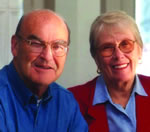 This year�s Honorary Alumni, Chase N. Peterson and Grethe Ballif Peterson, have served as exceptional envoys for the U. Chase taught at the U of U School of Medicine while maintaining a medical practice before leaving to serve as dean of admissions and vice president at his alma mater, Harvard. He returned to Utah as the University�s vice president for Health Sciences, and then served as president of the University from 1983-1991, overseeing significant campus growth, before returning to the School of Medicine as a clinical professor. He continues to mentor and guide students and programs important to the U. Grethe has served as executive director of the University�s Tanner Lectures on Human Values (since 1987), editing collected volumes of the lectures (published by the University of Utah Press) every year. She has been a member of numerous boards, State commissions, and task forces, and founded and chaired the Governor�s Task Force on Child Sexual Abuse. Together, the Petersons have received abundant honors, including recognition for service to humanity from the National Conference for Community and Justice. Return to Winter 2008-09 table of contents
| Back to top Alumni Most LoyalBy Linda Marion 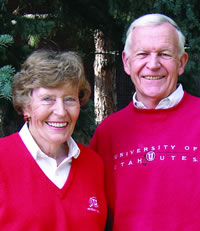 What is it that motivates alumni to stay involved with their alma mater? That�s a question that university and college alumni associations around the country have asked themselves since their inception. For without alumni interest and involvement, alumni associations and other campus entities that depend on alumni support would have no reason to exist. With that in mind, Continuum approached a couple of University of Utah graduates�certified �loyal Utes��to ask them why they have been, and continue to be, such staunch supporters of the U. Earl Wunderli BA�56 JD�59 and Corinne (Nelson) Wunderli BS�56 met as undergraduates. Both were involved in student government. She, a physical education major, served as senior class vice president; he, in philosophy, was student body president. Following graduation, Earl returned to the U for his law degree, and then worked for a firm in Salt Lake City for three years, while Corinne taught P.E., before the couple picked up and moved across the country�to Connecticut, where Earl had accepted a job in IBM�s legal department. They remained there for 31 years, raising two sons, Bret BA�84 and Jed BS�88 (who also met their spouses on the U of U campus). After Earl retired, the Wunderlis returned to their native Salt Lake City. It was Bill Barnhart MS�71, director of the International Center, who enticed Earl back to campus. The Wunderlis had met Barnhart on a U-sponsored study trip to Cambridge, England, and he invited Earl to become a member of the Community Advisory Board, which helps introduce international students to the local culture and community. The Wunderlis showed some students around town, and hosted the group at their home for dinner. �We fed them typical American fare and, in the process, were reminded how much college kids eat!� says Earl. When the Wunderlis were invited to volunteer for the Alumni Association-Government Relations Legislative Advocacy Program, they signed up. During each annual legislative session, members of the program stay in touch with their state legislators to urge support of the University�s funding priorities. The Wunderlis, instead of simply picking up the phone or firing off an e-mail, decided on a face-to-face approach, taking their state representative and then their state senator to lunch with other advocates from their district. Over the years, the Wunderlis have become increasingly involved in University activities. Corinne served as a member of the Friends of the Marriott Library Board, as program chair, heading up the Books & Authors series. Earl was president of the Law School Alumni Board of Trustees for a year, and joined the Beehive Honor Society Board. He is currently president of the Emeritus Alumni Board and oversees the board�s myriad activities, including publication of a newsletter, Homecoming reunion, community service projects, and the annual Merit of Honor Awards banquet. The couple also participates regularly in the Utah-BYU Rivalry Week food drive, a competition to see which of the two schools can raise the most food and funds for the Utah Food Bank. Standing in front of Rice-Eccles Stadium, braving the elements and fanatical fans while collecting donations before the Utah-BYU football game, they have discovered the key to effective fund-raising. �After people donate and walk away, we remind them that this is a competition with BYU, and sometimes they return and make another donation,� explains Corinne. �A little competition goes a long way,� adds Earl. Besides volunteering their time and talents, the Wunderlis have participated in various scholarship fund-raising initiatives sponsored by the Alumni Association, including the Donor Plaque, Walkway, and Block U initiatives, among others. As devoted patrons of the arts, the Wunderlis support Kingsbury Hall and Gardner Hall, and regularly attend plays at Pioneer Theatre Company. And every semester, they take a course at the U��Thanks to HB60,� notes Earl, which allows Utah citizens over age 62 to audit University courses for $25. They have enrolled in a wide variety of classes over the years�the American Indian, astronomy, evolution, philosophy, world religions, introduction to opera, and Shakespeare, to name a few. So: What is it that motivates Corinne and Earl Wunderli to stay involved with their alma mater? �Because we love the U,� says Earl. �We both had such a good experience as students, and the University does so much good for the community.� Simple. —Linda Marion BFA�67 MFA�71 is managing editor of Continuum. |
Wherever U Are, Stay Connected Kris Bosman
The University of Utah Alumni Association encourages and supports the activities of 14 alumni chapters sprinkled across the country�nonprofit organizations managed by dedicated U of U alumni volunteers who enjoy gathering together for a good time and supporting good causes. The chapters� goals are to stay connected to the U; to provide social, educational, and community service opportunities for their members; and to promote the goals of the University while building on the U�s strong traditions. If you would like to get involved with a chapter, or are interested in starting a chapter in your area, please contact Kris Bosman BS�99, (801) 581-3966. For an update on chapter activities, visit www.alumni.utah.edu/chapters. Arizona
Chapter President: Bay Area
Chapter President: Denver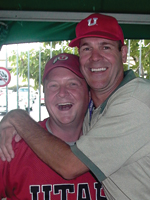
Chapter President: Los Angeles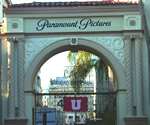
Chapter President: New England
Chapter President: New York
Chapter President: Orange County
Chapter President: Portland
Chapter President: Puget Sound
Chapter Committee: San Diego
Chapter President: Southern Nevada
Chapter President: Southern Utah
Chapter President: Texas Lone Star (Dallas)
Chapter President: Washington, D.C.
Chapter President: |